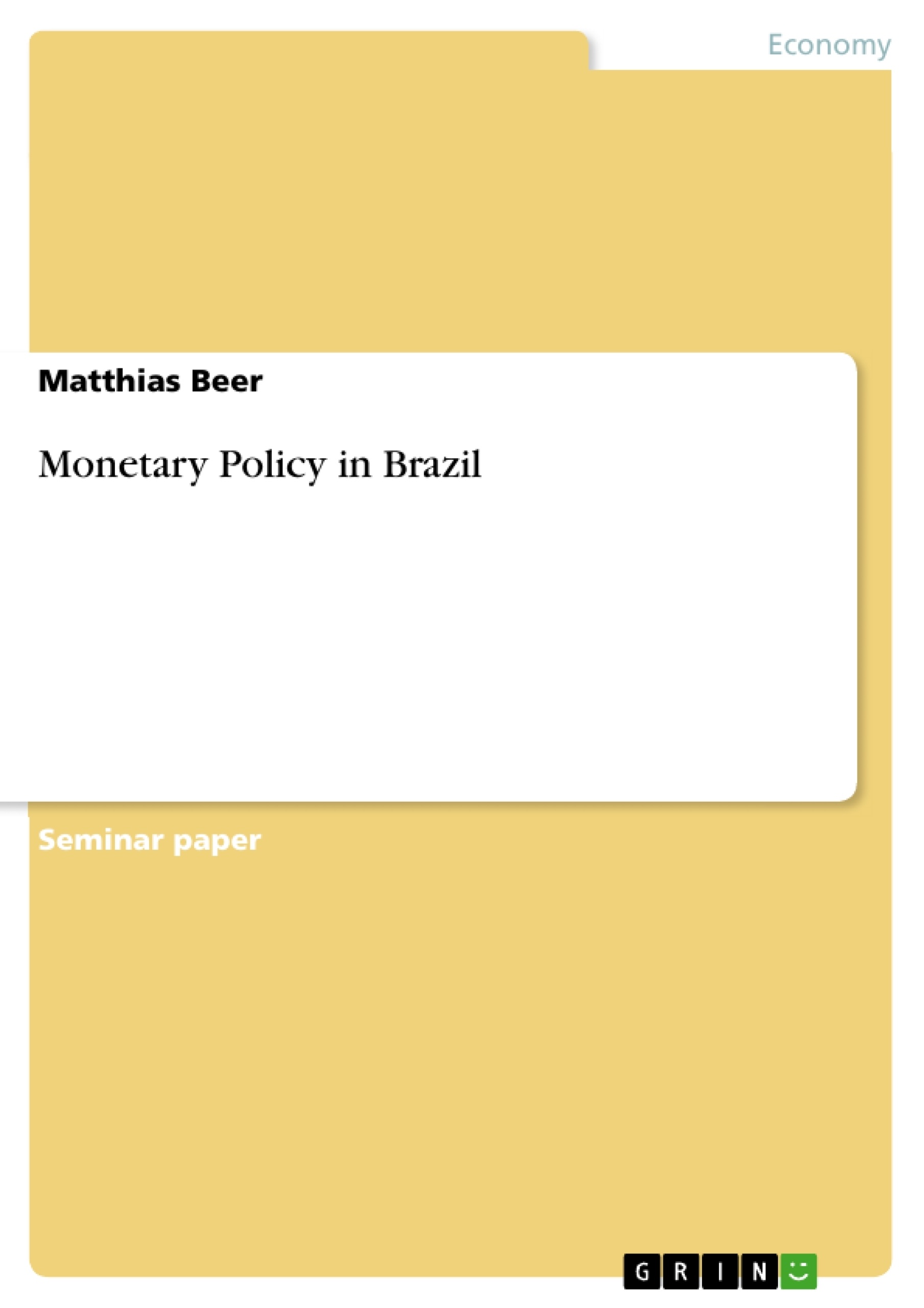Executive Summary:
Brazil is the largest country in South America with the highest population. Since 2003, Brazil has improved its macroeconomic stability and built-up foreign re-serves. They have further reduced debt and managed to keep inflation rates under control while committing to fiscal responsibilities. Nevertheless, back in history, from the 1960s to 1990s the country was struggling with continuously high inflation rates until Fernando Henrique Cardoso, the minister of finance and later president of Brazil, introduced the “Plano Real” 1st of March 1994.
The assignment describes the financial history of Brazil between the 1960s and 2000 in brief by giving some numbers about inflation rates and highlighting po-tential reasons for the long period and high rates. The work describes further on the stabilization efforts in the 1990s in Brazil by introducing the “Plano Real”, explaining the idea of introducing the Unidade Real de Valor, a parallel, virtual and relative currency to the Cruzeiro Real. In the third chapter the economical relation between money supply and inflation is explained by the quantity theory of money and an alternative to express inflation, the quantity equation, is given. The last part of the essay explains the classical dichotomy in economics in gen-eral and analyses the economical data of Brazil for the 1990s in this regards. The assignment is concluded by the ITM checklist.
Inhaltsverzeichnis (Table of Contents)
- Executive Summary
- List of Abbreviations
- List of Figures
- List of Tables
- 1. Introduction
- 2. Brazils Monetary Stabilization Efforts in the 1990s
- 3. Analysis of Relation between Money Supply and Inflation
- 4. Dichotomy of Economy
- 5. ITM Checklist
- Bibliography
Zielsetzung und Themenschwerpunkte (Objectives and Key Themes)
This assignment aims to analyze the monetary policy in Brazil, focusing on the historical context of high inflation rates and the stabilization efforts implemented in the 1990s through the "Plano Real." The paper explores the relationship between money supply and inflation, utilizing the quantity theory of money and the quantity equation to understand this economic phenomenon. Key themes explored in this assignment include:- The history of inflation in Brazil from the 1960s to the 1990s.
- The implementation and effectiveness of the "Plano Real" in stabilizing the Brazilian economy.
- The relationship between money supply and inflation, utilizing the quantity theory of money and the quantity equation.
- The classical dichotomy in economics and its relevance to the Brazilian economic context of the 1990s.
- The role of monetary policy in achieving macroeconomic stability in emerging economies.
Zusammenfassung der Kapitel (Chapter Summaries)
The assignment delves into the history of monetary policy in Brazil, focusing on the significant period of high inflation rates from the 1960s to the 1990s. It describes the stabilization efforts undertaken in the 1990s, particularly the introduction of the "Plano Real" and its key elements, including the Unidade Real de Valor (URV). The analysis then explores the relationship between money supply and inflation, explaining the quantity theory of money and its associated equation. The assignment concludes by examining the classical dichotomy in economics and its implications for understanding the Brazilian economy during the 1990s.Schlüsselwörter (Keywords)
This assignment focuses on the following key areas and concepts: Brazilian monetary policy, inflation, stabilization, "Plano Real," Unidade Real de Valor (URV), quantity theory of money, quantity equation, classical dichotomy, macroeconomic stability.- Quote paper
- Dipl. Ing. MBA Matthias Beer (Author), 2011, Monetary Policy in Brazil, Munich, GRIN Verlag, https://www.grin.com/document/233262



